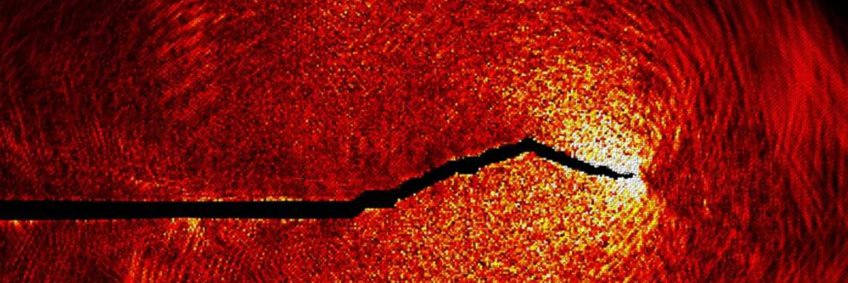
Fracture in model systems
Effect of lattice discreteness and heterogeneities
Atomistic simulation methods are often used to study cracks at the atomic scale. Usually, such studies focus on material-specific aspects like dislocation emission from cracks, crack-tip plasticity or grain boundary fracture and therefore use complex, non-linear atomic interaction potentials.
In contrast, the model harmonic snapping-spring potentials used in this project allow us to study fundamental aspects of fracture mechanics at the atomic scale that can be generalized to different materials. The linear elastic response and lack of surface tension and reconstructions of these potentials enable us to directly compare simulation results to linear elastic fracture mechanics (LEFM). LEFM has proven extremely useful on the macroscale, e.g., in structural integrity, mechanical engineering, and materials science. In how far it can be applied down to the atomic scale is, however, less-well studied.
This project investigates how lattice discreteness and heterogeneities lead to deviations from continuum mechanical treatments of cracks. The used potentials offer full control over the system, allowing us to precisely tune the elastic, acoustic and bonding properties of the simulated models. This is extremely helpful in exploring the relationships between the geometry of cracks (crack tip curvature, crack front length and shape), the bonding and the fracture toughness, or in investigating how heterogeneities in elastic properties and bond strength affect dynamic crack propagation in 3D.
This project is part of GRK 2423 FRASCAL.